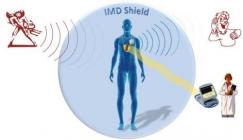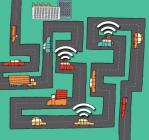Low-Power Systems

The center develops hardware and software designs for energy-efficient mobile systems. These include low-power handsets, energy-scavenging sensors, and wireless medical devices.
IMDShield: Securing Implantable Medical DevicesDina KatabiIMDShield explores the feasibility of protecting IMDs without modifying them by implementing security mechanisms entirely on an external device. Such an approach enhances the security of IMDs for patients who already have them, empowers medical personnel to access a protected IMD by removing the external device or powering it off, and does not in itself increase the risk of IMD recalls. |
 |
Aggregation in Dynamic NetworksCalvin NewportThe aggregation problem assumes that every process starts an execution with a unique token (an abstraction for data). The goal is to collect these tokens at a minimum number of processes by the end of the execution. This problem is particularly relevant to mobile networks where peer-to-peer communication is cheap (e.g., using 802.11 or Bluetooth), but uploading data to a central server can be costly (e.g., using 3G/4G). With this in mind, we study this problem in a dynamic network model, in which the communication graph can change arbitrarily from round to round. We start by exploring {\em global} bounds. First we prove a negative result that shows that in general dynamic graphs no algorithm can achieve any measure of competitiveness against the optimal offline algorithm. Guided by this impossibility result, we focus our attention to dynamic graphs where every node interacts, at some point in the execution, with at least a $p$-fraction of the total number of nodes in the graph. We call these graphs $p$-clusters. We describe a distributed algorithm that in $p$-clusters aggregates the tokens to $O(\log n)$ processes with high probability. We then turn our attention to {\em local} bounds. Specifically we ask whether its possible to aggregate to $O(\log{n})$ processes in parts of the graph that locally form a $p$-cluster. Here we prove a negative result: this is only possible if the local $p$- clusters are sufficiently isolated from the rest of the graph. We then match this result with an algorithm that achieves the desired aggregation given (close to) the minimal required $p$-cluster isolation. Together, these results imply a ``paradox of connectivity'': in some graphs, increasing connectivity can lead to inherently worse aggregation performance. We conclude by considering what it seems to be a promising performance metric to circumvent our lower bounds for local aggregation algorithms. However, perhaps surprisingly, we show that no aggregation algorithm can perform well with respect to this metric, even in very well connected and very well isolated clusters.
|
 Christine Daniloff |
Efficient and Reliable Backscatter NetworksDina KatabiThere
is a long-standing vision of embedding backscatter nodes like RFIDs
into everyday objects to build ultralow power ubiquitous networks. A
major problem that has challenged this vision is that backscatter
communication is neither reliable nor efficient. Backscatter nodes
cannot sense each other, and hence tend to suffer from colliding
transmissions. Further, they are ineffective at adapting the bit rate to
channel conditions, and thus miss opportunities to increase throughput,
or transmit above capacity causing errors. |
 |


